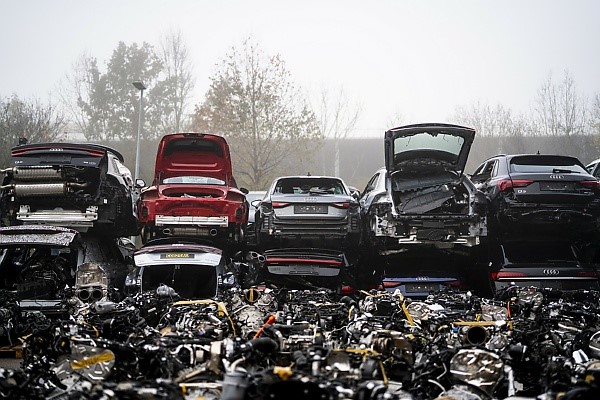

German luxury automobile giant Audi has constituted a 'MaterialLoop' in collaboration with 15 associates from the supply, recycling and research sectors. This project will allow Audi to introduce a closed raw material circulating loop along the automobile industry.

Audi is ready to collect the post-consumer materials from its cars after they are scrapped to construct new flagship vehicles. After eulogising Audi's protocol for a circular economy, the project went on to identify specific incantations on how a circular economy can be activated and run smoothly.
To this date, a minimal amount of interest has been spent on upcycling the materials used in old, end-of-life cars. Therefore, the metal extracted from these vehicles, such as steel, ends up as a structural material for construction purposes. Audi claims to change this notion by utilising secondary materials from end-of-life vehicles to form new car models. The company wishes to avoid downcycling at any cost, which reduces the quality of raw materials.
Audi's CEO, Markus Duesmann, exclaimed: "The MaterialLoop project underscores our ambitious vision to operate a highly efficient circular economy concept for end-of-life vehicles."
"It is our goal to recover as many materials as possible at a high level of quality and reuse them in production. This will save valuable primary materials and lower the products' ecological footprint. Simultaneously, direct access to secondary materials can contribute to increased security of supply. Raw materials would no longer have to be extracted," he added.
As early as October 2022, over 100 cars were dismantled to flag off the joint MaterialLoop project. An individualistic sorting technique helps in sorting high-quality secondary materials like big plastic pieces that can be directly streamlined for recycling. The car parts are properly dissembled in Audi factories, where the steel, aluminium, plastic and glass are separated in partnership with other associated companies.
Audi's head of supply chain sustainability Johanna Klewitz declared: "Our emphasis on cycles within the industry enables us to use our products and the materials they're made from for as long as possible. Our vision is to rely less on secondary materials from other industries in the future."
Audi wishes to reduce the carbon footprint along its supply chain and to have a secure batch of raw materials for each production cycle. The project can be listed under Audi's circular economy strategy, which revolves around producing the best quality products with no compromise.
The expert for circular economy at Audi, Dennis Meinen, asserts: "At its core, circular economy is about handling resources responsibly. Longevity, repairability, and, indeed, our products' ability to be recycled are thus all in focus."
Audi's pilot recycling project will continue till the end of April, which has already started yielding fruitful results that the company may apply in its future endeavours.
The MaterialLoop project also assures each Audi customer that their car has been constructed out of safe and industrially approved materials. Audi wishes to slowly amplify the share of recyclates in its automobile portfolio in the upcoming years. Maybe in the future, each component of an Audi car will be made of recycled end-of-life car scraps.
The retrieved aluminium is usually managed in Audi's recycling sites at Neckarsulm, Gyor and Ingolstadt since 2017, with partial storing and recycling happening at the Volkswagen site in Bratislava.
Audi sends in the residual aluminium offcuts directly to the supplier for reuse. There the aluminium sheets are recycled to produce similar kinds of aluminium components for further use in Audi vehicles. This helps safeguard huge material loss during the usual production process.
Moreover, among all the other materials used in making a car, aluminium can be recycled infinitely without losing the original properties of the non-ferrous metal, thus inducing a good circular economy in the long run. Also, recycling aluminium requires much lesser energy than primary aluminium production and is safer for the environment.
Responses








